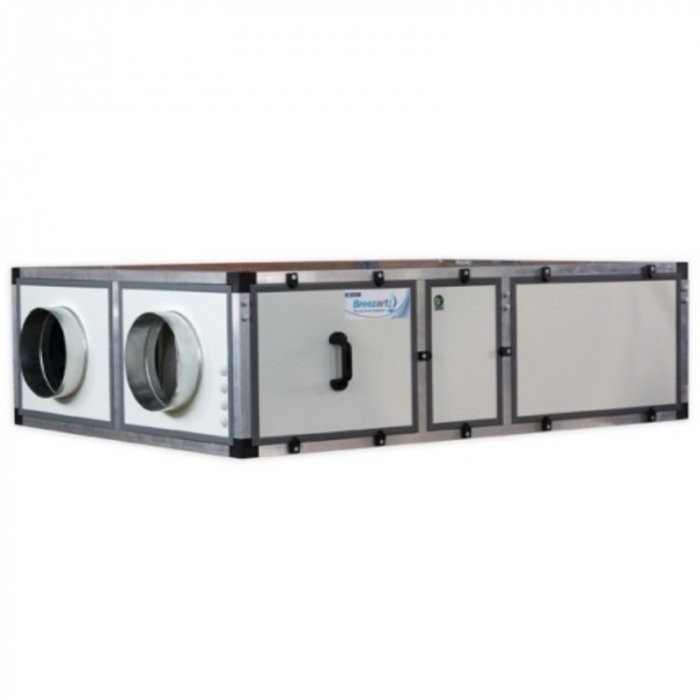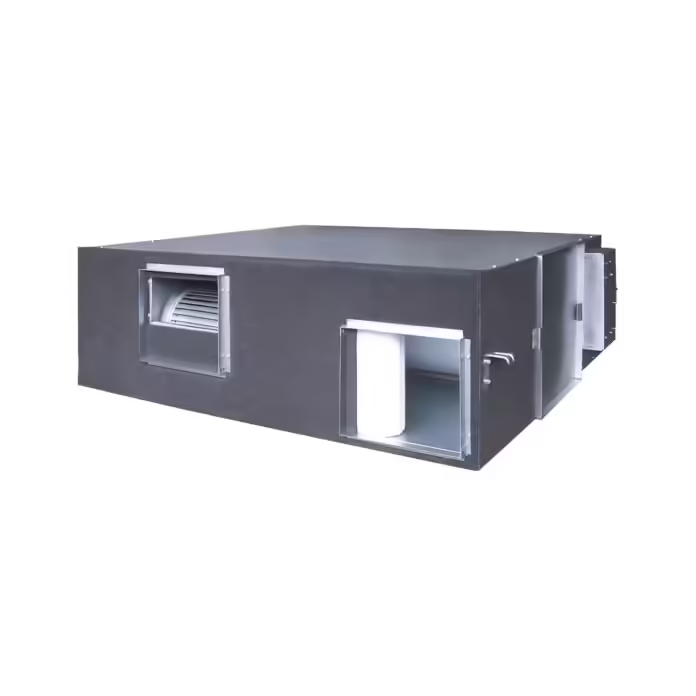As the relentless pursuit of energy efficiency drives innovation in architecture and design, maximizing heat recovery in buildings has become increasingly pressing. In today’s world, where energy consumption is a significant concern, reducing energy waste and optimising heating systems is crucial for minimizing carbon emissions and reducing operational costs. One effective approach to achieving this is implementing single room heat recovery systems. By harnessing the wasted heat from exhaust air and reusing it to warm incoming fresh air, these systems can significantly reduce the energy required for heating, improving air quality and indoor climate.
Introduction to Single-Room Heat Recovery
In today’s increasingly sustainable and environmentally conscious world, the need for efficient and effective heating solutions has never been more pressing. With the ever-growing concern for carbon emissions and energy consumption, it’s no wonder that single-room heat recovery has emerged as a viable solution for homeowners and businesses alike.
This innovative technology allows for efficient heat recovery from exhaust air, condensing it into a usable form to warm up a single room or even an entire building. By harnessing the heat energy that would otherwise be wasted, single-room heat recovery systems offer a game-changing alternative to traditional heating methods.
In this comprehensive guide, we’ll explore the benefits, applications, and best practices for maximizing efficiency in single-room heat recovery. From the fundamentals of how these systems work to the various types of heat recovery systems available, we’ll provide you with a thorough understanding of this cutting-edge technology.
Understanding the Importance of Small Heat Recovery Ventilator
Small heat recovery ventilators (HRVs) are crucial in improving indoor air quality and energy efficiency in residential and small commercial buildings. These compact devices are designed to exchange stale indoor air with fresh outdoor air while recovering heat from the outgoing air stream. This process helps maintain a comfortable and healthy indoor environment by removing pollutants, odours, and excess moisture while reducing the strain on heating and cooling systems.
The importance of heat recovery ventilators lies in their ability to address two key concerns for building occupants: air quality and energy efficiency. Inadequate ventilation can lead to a buildup of indoor pollutants, including volatile organic compounds (VOCs), carbon dioxide, and allergens, which can negatively impact health and comfort. By continuously exchanging indoor air with fresh outdoor air, HRVs help to dilute and remove these pollutants, promoting better indoor air quality and reducing the risk of respiratory problems and other health issues.
Furthermore, small HRVs are designed with energy efficiency in mind. By recovering heat from the exhaust air before it is expelled from the building, these devices pre-heat the incoming outdoor air during the winter months and pre-cool it during the summer, reducing the energy required to condition the indoor air to a comfortable temperature.
The Value of Single Room Heat Recovery Ventilator
Single room heat recovery ventilators (HRVs) provide targeted ventilation solutions for individual spaces within residential and commercial buildings AND Offering significant value in terms of indoor air quality improvement. One of the primary benefits of single-room HRVs is their ability to enhance indoor air quality by exchanging stale indoor air with fresh outdoor air while simultaneously recovering heat from the outgoing air stream.
This process helps to remove pollutants, odours, and excess moisture, creating a healthier and more comfortable environment for occupants. By filtering out contaminants and allergens, single-room HRVs can also reduce the risk of respiratory problems and other health issues, particularly in spaces where ventilation may be limited.
In addition to improving indoor air quality, single-room HRVs contribute to energy efficiency by recovering heat from the exhaust air before it is expelled from the room. Depending on the season, these devices reduce the energy required to maintain a comfortable temperature indoors by pre-heating or pre-cooling the incoming outdoor air. This heat recovery process lowers heating and cooling costs, saving energy and reducing environmental impact.
Principles of Effective Single-Room Heat Recovery
Effective single-room heat recovery is a delicate balancing act, relying on the harmonious interplay of several key principles. At the heart of this process is the concept of thermal bridging, where the transfer of heat from one area to another is optimized by carefully considering the room’s layout and design. This involves minimizing the creation of thermal bridges, or pathways, that allow heat to escape and, instead, focusing on creating a continuous, well-insulated envelope that wraps around the room.
Another crucial principle is the strategic placement of heat recovery devices, such as heat exchangers or ventilation systems. These devices must be carefully positioned to maximize the capture of heat energy while minimizing the introduction of cold air or contaminants into the room. This requires a deep understanding of the room’s airflow patterns and the specific characteristics of the heat recovery devices being used.
The principles of heat recovery also involve carefully managing air flow rates, humidity levels, and air quality. By ensuring that the room’s air is circulated and filtered efficiently and effectively, heat recovery systems can be optimized to maximize their performance and minimize their environmental impact.
Choosing the Right Heat Recovery System for Your Needs
The options can be overwhelming when selecting the right heat recovery system for your single-room needs. With a multitude of products and technologies available on the market, it’s essential to take the time to consider your specific requirements and goals carefully. Will you use the system for a small, compact space or a larger, more sprawling area? Are you looking for a system that can handle high volumes of air or one designed for more precise, targeted airflow?
To get started, it’s a good idea to consider the following factors: the size and layout of your space, the type and quantity of air you need to recover, and your budget. You’ll also want to think about the level of noise you’re willing to tolerate and the system’s energy efficiency and maintenance requirements.
Once you clearly understand your needs, you can begin researching different types of heat recovery systems, such as plate heat exchangers, rotary heat exchangers, and enthalpy wheels. Each has its unique benefits and drawbacks; some may be better suited to your situation than others.
The Importance of Single Room HRV
Single room HRV play a crucial role in addressing indoor air quality concerns and improving individual spaces’ overall comfort and energy efficiency within residential and commercial buildings. These compact devices offer targeted ventilation solutions that are particularly valuable in rooms where traditional ventilation systems may be insufficient or impractical.
One key importance of single-room HRVs is their ability to enhance indoor air quality. In many buildings, especially those with limited ventilation, indoor air can become stale and polluted, leading to discomfort and potential health risks. Single-room HRVs continuously exchange stale indoor air with fresh outdoor air while recovering heat from the outgoing air stream. This process helps to remove pollutants, allergens, and excess moisture, creating a healthier and more comfortable indoor environment for occupants.
Moreover, single-room HRVs contribute to energy efficiency by recovering heat from the exhaust air before it is expelled. Depending on the season, these devices reduce the energy required to maintain a comfortable temperature indoors by pre-heating or pre-cooling the incoming outdoor air. This heat recovery process lowers heating and cooling costs, saving energy and reducing environmental impact.
Maintenance and Upkeep to Ensure Peak Performance
Regular maintenance and upkeep are essential to ensure peak performance and longevity of a single-room heat recovery ventilator (HRV). Here are some key maintenance tasks to consider:
- Regular Filter Cleaning or Replacement: The filters in an HRV trap dust, allergens, and other airborne particles, preventing them from entering the indoor air supply. Cleaning or replacing these filters regularly (typically every 3 to 6 months) is crucial to maintain proper airflow and prevent the buildup of contaminants that can hinder performance.
- Cleaning the Heat Exchange Core: The heat exchange core in an HRV transfers heat between the outgoing and incoming air streams. Over time, dust and debris can accumulate on the core’s surfaces, reducing efficiency. Periodically cleaning the heat exchange core according to the manufacturer’s recommendations will help ensure optimal heat recovery performance.
- Inspecting and Cleaning Ventilation Ducts: The ventilation ducts connected to the HRV should be inspected periodically for any signs of blockages, leaks, or buildup of dirt and debris. Cleaning the ducts as needed will help maintain proper airflow and prevent the circulation of contaminated air throughout the space.
Benefits of Upgrading To a Small HRV Units
Upgrading to the small HRV units offer several benefits for residential and small commercial buildings:
- Improved Indoor Air Quality: HRV units continuously exchange stale indoor air with fresh outdoor air while recovering heat from the outgoing air stream. This process helps to remove pollutants, allergens, and excess moisture, leading to healthier and more comfortable indoor environments for occupants.
- Enhanced Energy Efficiency: By recovering heat from the exhaust air before it is expelled from the building, HRV units pre-heat or pre-cool the incoming outdoor air, depending on the season. It reduces the energy required to maintain a comfortable indoor temperature, resulting in lower heating and cooling costs and increased energy savings.
- Cost Savings: Over time, the energy savings achieved through the improved efficiency of HRV units can lead to significant cost savings on utility bills. Additionally, the ability to zone heating and cooling in individual rooms or spaces can further optimize energy usage and reduce operating expenses.
Conclusion
As you’ve reached the final section of our guide, you’re now well-equipped to maximise efficiency in your home or office by implementing a single room heat recovery system. By following the steps outlined in this comprehensive guide, you’ve gained a thorough understanding of the benefits and best practices that will ensure a successful installation. From identifying the most suitable heat recovery technology to selecting the optimal installation location, you’ve learned how to overcome potential obstacles and maximise your investment.
FAQS
What Is A Single Room Heat Recovery System?
A single-room heat recovery system, or a single-room HRV, is a compact ventilation device designed to provide targeted ventilation solutions for individual spaces within residential or commercial buildings. It exchanges stale indoor air with fresh outdoor air while recovering heat from the outgoing air stream.
How Does A Single-Room Heat Recovery System Work?
Single-room HRVs use a heat exchange core to transfer heat from the outgoing air to the incoming air, pre-heating or pre-cooling the fresh outdoor air before entering the room. This process helps to maintain a comfortable indoor temperature while improving indoor air quality by removing pollutants and excess moisture.
What Are The Benefits Of A Single-Room Heat Recovery System?
Some advantages of single-room HRVs include improved indoor air quality, enhanced energy efficiency, cost savings on heating and cooling bills, customized ventilation solutions for individual rooms, ease of installation, and environmental sustainability.
| Other Good Articles to Read |
| Cme Blog Spot |
| Garcias Blogs |
| Yyc Blogs |
| Guiade Blogs |
| Blogs-Hunt |
| Impact-Blog |
| Smarty Blogs |
| Ed Blog |
| Mo Blogs |
| Blogs Em |
| Blog St |
| Related Business Listings |
| Contact Directory |
| Local Business Profiles |

